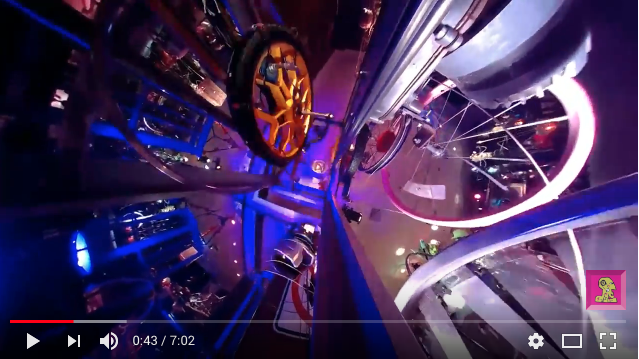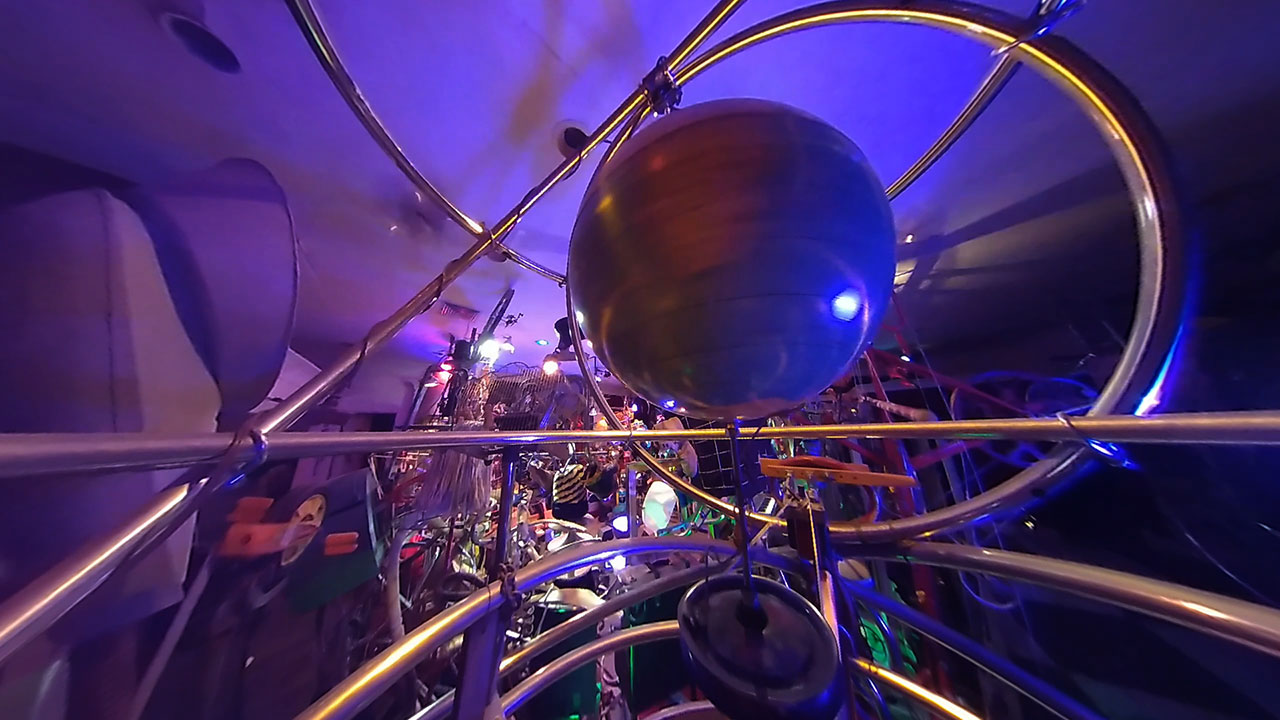In 2017, Ned Schaper received an artist research and development grant from Arizona Commission on the Arts to support development of the Museum Of Kinetic Art (MOKA) into a 360-degree virtual reality tour. Over the last year and a half, he’s been experimenting, learning and producing a tour so that people anywhere can enjoy the Museum Of Kinetic Art.
Approximately 7 minutes from start to finish, the tour allows viewers to feel as if they are inside the museum and get a close look at many of the mechanized characters. The tour is now live on YouTube: https://youtu.be/L8U0pFU1hHg. Footage is also being used in classroom videos for The Universe Within, a creative thinking and world-building course developed by Mat Bevel Company.
Ned’s original idea was to put a virtual reality camera on a motorized cart and move it through the museum as a person would walk through the space. But after purchasing and experimenting with a 360fly virtual reality camera, he realized the images were far more interesting when you put the camera inside the sculptures. He explains, “It looks like you’re in a city of skyscrapers. It makes the viewer feel like he/she is a small entity inside a giant warped universe of junk.”
So instead of moving the camera like a normal virtual reality tour where the viewer controls the experience, for example using goggles, the camera stays still, Ned controls the virtual reality output, creating a final video piece as a normal HD video.
Ned got the idea to build kinetic devices to move the camera while in “Watch Me” editing mode. The first thing he tried was a turntable that made the camera slowly turn in a circle. He says, “This world of rotating sculptures reminded me of a spiraling galaxy of junk sculpture stars.”
This gave him the idea to set the whole room of sculptures into a circular installation, packed with all the sculptures and lights in one small area with the camera right in the center. You’ll easily pick this effect up in the video.
Ned went to work creating this circular installation while shooting from the same camera position. Once the installation was complete, and he got the shot he was looking for, he then began moving the camera around close to the sculptures without the rotating turntable making use of the bizarre fish-eye effect. When he started the project, the Museum Of Kinetic Art occupied the entire space, but after he built this installation, the museum was packed into a smaller circular area.
 With many years’ experience shooting and editing video, the virtual reality technology represented a major step forward for his art. The project substantially expanded his knowledge of how to use virtual reality technology, how to move the camera in new ways and how to capture localized sound.
The three cameras give Ned a whole new context and narrative for his theater’s world of Beveldom. This helped him establish the look and feel of Beveldom as a space junk experience in a galaxy of kinetic art stars.
Ned says, “One interesting aspect of the 360fly is how it changes what’s desired for the ceiling. With 360fly the ceiling is such a big part of it, you want to work with what’s above.”
This project changed his artistic path. Experimenting with the new 360fly camera technology gave him an internal perspective on the museum. It led him to design a new 360 Theater for the future, in a new location where he can combine a live and a virtual theater with a virtual reality camera in the center of a circular stage. The theater set will help establish the look and feel of Beveldom—”the galaxy of junk”—with a full sphere of kinetic sculpture and light.
With many years’ experience shooting and editing video, the virtual reality technology represented a major step forward for his art. The project substantially expanded his knowledge of how to use virtual reality technology, how to move the camera in new ways and how to capture localized sound.
The three cameras give Ned a whole new context and narrative for his theater’s world of Beveldom. This helped him establish the look and feel of Beveldom as a space junk experience in a galaxy of kinetic art stars.
Ned says, “One interesting aspect of the 360fly is how it changes what’s desired for the ceiling. With 360fly the ceiling is such a big part of it, you want to work with what’s above.”
This project changed his artistic path. Experimenting with the new 360fly camera technology gave him an internal perspective on the museum. It led him to design a new 360 Theater for the future, in a new location where he can combine a live and a virtual theater with a virtual reality camera in the center of a circular stage. The theater set will help establish the look and feel of Beveldom—”the galaxy of junk”—with a full sphere of kinetic sculpture and light.